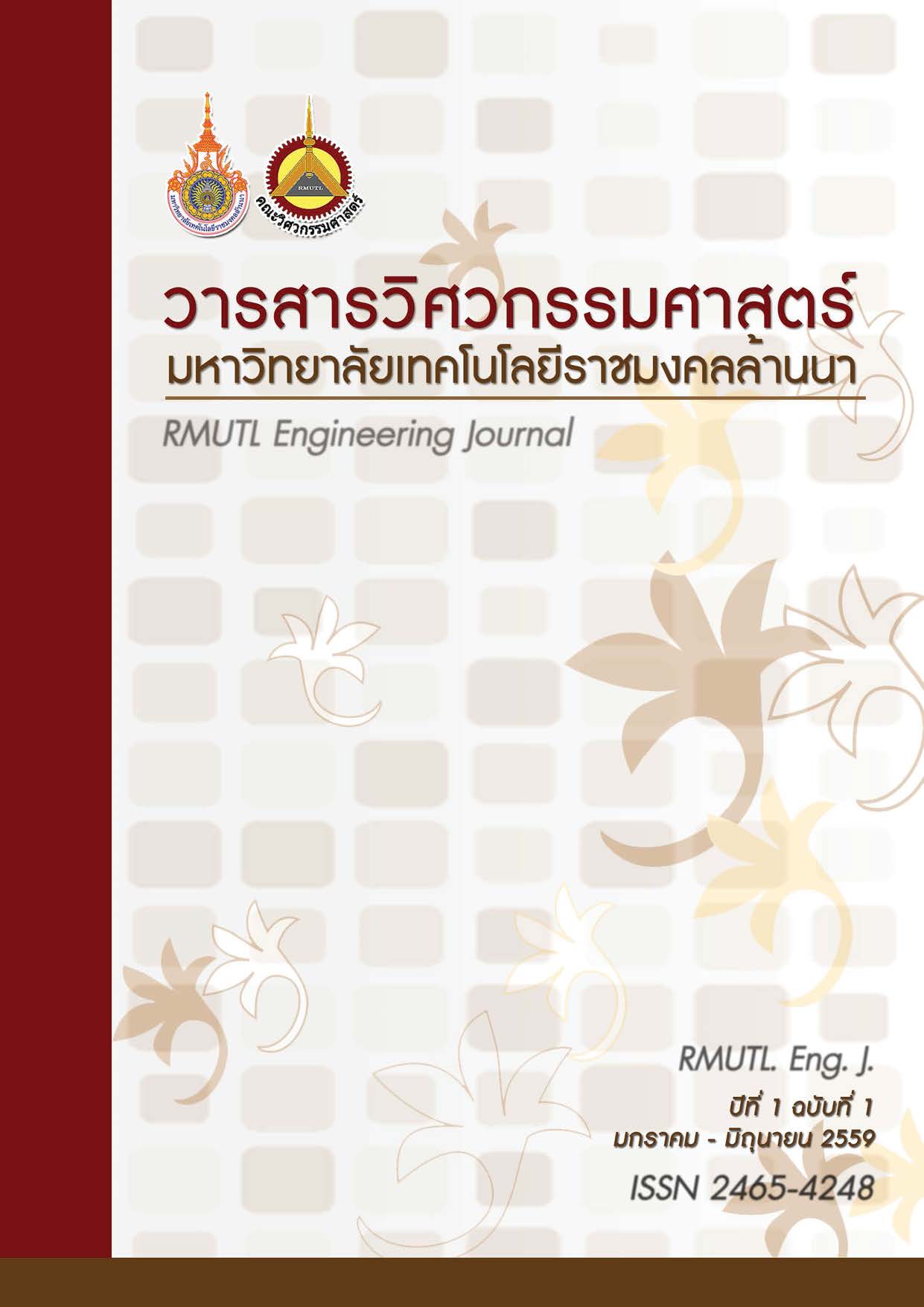Effect of Inlet Air Flow on Thermal Efficiency of Bio-Char Stove from Agricultural Waste
Keywords:
Bio-char stove, Bio-char, Thermal efficiency, Agricultural waste, Water Boiling TestingAbstract
The biochar stove for a household is one of biochar technology that is research and development for transfer technology to using in the community based. Thermal efficiency study of the bio-char stove by comparison testing between using the stove under fan force condition and natural force together with biochar production from agricultural waste as corncob, parchment coffee and wampee seed are targeted in this work. Thermal efficiency via Water Boiling Testing (WBT) is using for testing bio-stove that is designed in the type of Rocket Stove or double layer of the cylinder. In the center of the stove used for combustion and heat source of the control zone to degradation a biomass that contain inside the shell of the stove. The results show that average thermal efficiency of the stove under fan force condition is higher than that natural force of 16.58% and 14.51% respectively. The biochar production of parchment coffee via biochar stove shown to higher thermal efficiency than corncob and wampee seed as 20.93%, 18.39% and 10.42% respectively. The property of biochar that produce by the stove in term of heating value are lower the bio-char from laboratory and in the condition of fan force could produce the higher heating value of biochar than that of the natural force of 4,206.43 kJ/kg and 3,347.02 kJ/kg respectively. The heating value of biochar from corncob is higher than parchment coffee and wampee seed of 6,939.07 kJ/kg. The comparison of thermal efficiency between biochar stove on this work with the result from another research found that this biochar stove give the relatively high thermal efficiency, thermal efficiency of the stove as 16.51% and 14.51% in
the condition of fan force and natural force on the average of 3 types of agricultural waste on the production.
References
2. Maschio, G., Koufopanos, C. and Lucchesi, A.(1 9 9 2 ) . Pyrolysis, a promising route forbiomass utilization. Bioresource Technology, vol. 42, 1992, pp.219–231.
3. Torres-Rojas, D., Lehmann, J., Hobbs, P.,Joseph, S. and Neufeldt, H. (2011). Biomass availability. Energy consumption and biochar production in rural households of Western Kenya. biomass and bioenergy, vol.35, 2011, pp.3537 – 3546.
4. Kumar, M., Kumar, S., and Tyagi, S.K., (2013).Design, development and technological advancement in the biomass cookstoves: A review. Renewable and Sustainable Energy Reviews, vol. 26, 2013, pp.265-285.
5. MacCarty, N., Still, D. and Ogle, D., (2010).Fuel use and emissions performance of fifty cooking stoves in the laboratory and related benchmarks of performance. Energy for Sustainable Development, vol, 14, 2010,pp.161-171.
6. โปรดปราน สริธิรีศาสน์, ณัฐพล ช่างการ และศรัณย์ ชโนวิทย์ (2554). การปรับปรุงคุณภาพของของผสมชีวมวลและถ่านหินด้วยกระบวนการแยกสลายด้วยความร้อน (pyrolysis) โดยใช้คลื่นไมโครเวฟ, การประชุมวิชาการนานาชาติวิศวกรรมเคมีและเคมีประยกุต์แห่งประเทศไทย ครั้งที่ 21.
อ่าเภอหาดใหญ่. จังหวัดสงขลา
7. Carter, K and Shackle, S. (2011). Biochar Stoves: an innovation studies perspective,UK Biochar Research Center (UKBRC), School of Geo- Science, University of Edinburgh.










